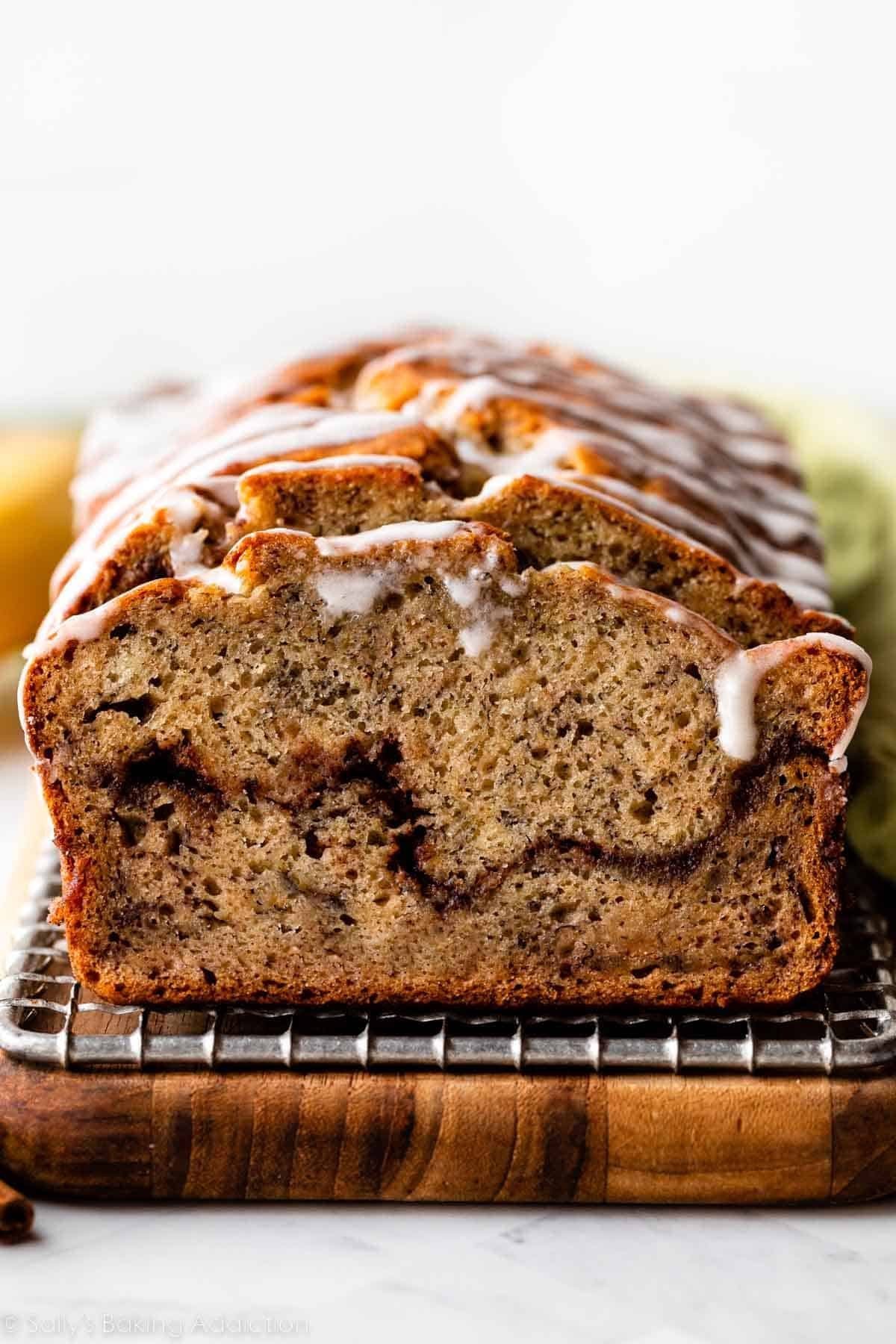Classic Banana Bread with a Twist of Cinnamon

Many families rely on banana bread as a trusty solution for overripe bananas—one that’s simple enough for casual bakers yet consistently wins over even the most discerning sweet tooth. While the core recipe has existed for ages, there’s always a bit of room to put your own spin on it. This version calls for a gentle swirl of cinnamon, lending a warm note that enhances the bread’s natural sweetness without veering into overly spiced territory. The goal is a balanced, tender loaf that pairs perfectly with morning coffee or afternoon tea, reminiscent of a beloved bakery staple but made in the comfort of your own kitchen.
Some attribute the enduring popularity of banana bread to its forgiving nature. Mashed bananas not only yield sweetness but also contribute moisture, making it tougher to end up with a dry crumb. The U.S. Department of Agriculture references bananas’ potassium content, though once baked into a loaf, the nutritional angle becomes secondary to the enjoyment factor. The bananas also help replace part of the fat content that might otherwise be required for a fluffy texture. This approach proves particularly helpful for anyone wanting to slightly lighten the recipe while maintaining that classic, tender bite.
At its core, the batter hinges on basic pantry items: flour, sugar, eggs, and a mild fat source—often butter or oil. Some devotees argue that using melted butter accentuates richness, while others prefer canola oil for a smoother crumb. If your bananas are still on the firmer side, there’s a quick trick: placing them in a warm oven for a few minutes encourages them to soften and sweeten. Meanwhile, if they’re already well-browned and you want to up their sweetness even further, letting them rest on the counter another day or two can intensify their flavor before baking commences.
Before stirring everything together, a small bowl of cinnamon sugar awaits. The idea: once the batter is partially poured into the loaf pan, you sprinkle a thin layer of this blend, then pour the remaining batter on top, creating a cinnamon “ribbon” that weaves through each slice. It’s a subtle addition but can lift the loaf to new heights, ensuring every bite boasts a hint of warmth. For a slightly bolder taste, a pinch of nutmeg or even a trace of cardamom can slip into the cinnamon mixture. However, maintaining a light touch avoids overshadowing the bananas’ fruit-forward tone.
Preparation remains straightforward. After preheating the oven to around 350°F, the wet ingredients—mashed bananas, melted butter (or oil), eggs, and perhaps a dash of vanilla extract—come together in a single bowl. In a separate bowl, the dry ingredients unify: flour, sugar, baking soda, and a small pinch of salt. The wet and dry elements meet, though overmixing is a pitfall to watch for. Stirring gently until just combined typically yields a loaf that’s airy enough without forming unwelcome gluten networks. This step often sits at the heart of any quick bread technique: minimal fuss to ensure a tender crumb.
A lightly greased or parchment-lined loaf pan holds the batter. Now arrives the cinnamon sugar swirl moment: pour in half the batter, dust that cinnamon sugar mixture, then top with the remaining batter. Some swirl it gently with a butter knife for an artistic marbling, but a single straight pass is enough to create faint ribbons. After leveling the top, the pan slides into the oven, where about 50 to 60 minutes of baking typically finishes the job. A toothpick test near the end is an easy checkpoint—once it comes out clean or with a couple of crumbs, the loaf is ready. The aroma often precedes the finished visual, flooding the kitchen with a comforting, bakery-like scent that draws family members in anticipation.
Cooling is crucial, though it can test patience. Banana bread remains warm for a good while after leaving the oven, and cutting in too quickly may yield a softer center or crumbly slices. Allowing the loaf to rest in the pan for around 10 minutes helps it settle, then transferring to a wire rack finalizes the process. Only after a decent cool-down does each slice reveal that gentle swirl. Some prefer to reheat individual slices briefly in a toaster oven the next day, capturing a faint crispness at the edges that pairs well with a dab of butter.
While delicious on its own, this bread suits a few embellishments. Butter or margarine is a given for some, while others enjoy a drizzle of honey or a smear of cream cheese. If you’re keen on extra sweetness, a simple glaze of powdered sugar and milk can top the loaf. This easy approach also helps preserve moisture if you plan to store the bread for a day or two. Placing it in an airtight container (or wrapping it in foil) on the countertop typically keeps it fresh for up to three days, though in many households, it never lasts that long. If, against all odds, you find yourself with leftover slices, they freeze well, acting as a ready-to-reheat snack or breakfast treat.
All told, this cinnamon-laced banana bread shows how a basic recipe can offer repeated comfort without requiring expert baking skills or exotic ingredients. The interplay of fruit sweetness, gentle spice, and moist crumb reaffirms why it’s become a staple across so many home kitchens. And given its forgiving nature, small tweaks—like using whole wheat flour or swapping out a portion of the sugar for honey—hardly disrupt the essential appeal. Year after year, loaf after loaf, many find that this unassuming bread continues to delight, bridging past traditions with present-day twists, and capturing the simple joy that only a fresh-baked treat can provide.
